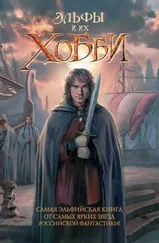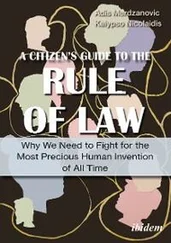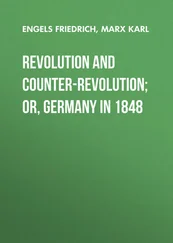For most of 1933, the imported Prussian suffered the same consequences everywhere he went. He threw his troops into brutal frontal assaults against entrenched machine guns that succeeded only by adding to the piles of bodies. It was World War I all over again, but without the French wine and German mustard gas. As the only person in this war who participated in the Great War, you might think Das Ringer would have learned this lesson.
Now Kundt insisted on holding every inch of the front lines, overstretching his army, solely to control territory without any thought to an overall strategy. Military folly again. Bolivia… had hired the wrong Prussian. Further adding to the Bolivians’ problems was their desire to run the war on the cheap. They had failed to build a larger army than the Paraguayans’ despite a much larger population.
In May 1933, again for no apparent reason, Paraguayan president Eusebio Ayala finally declared war on Bolivia. It was the first declaration of war by any country since the founding of the League of Nations. The noble intentions of the League had met head-on with the reality of South American politics.
During September 1933 Estigarribia pushed forward. He thrust ahead in flanking movements, trapping large numbers of Bolivian troops. Surrounded and waterless, they surrendered rather than die of thirst. The Paraguayans pushed onward again, drilled wells for water, and committed their reserves. Kundt held firm. Too firm, it turns out. He refused to ask for more troops and refused to make any strategic retreats. His subordinates, already upset at being led by a foreigner, could not understand his decision to hold all sectors of the crumbling front. The few planes in the Bolivian air force regularly reported Paraguayan flanking movements. Kundt disregarded them, and this proved his undoing. By December he became the victim of his own dreaded double envelopment. He failed to fully protect his flanks, the first lesson taught in Prussian military kindergarten. Foiled by his own strategy, surrounded, his troops dropping from dehydration, Kundt’s army folded and ran. Those who escaped survived solely because the Paraguayans were too exhausted to complete the rout. When the two sides settled down, the Bolivian army had been reduced to only 7,000 men in the field and one single Prussian muttering in German about double envelopments. The Bolivians were right back where they had started at the war’s outset.
ERNST RÖHM
Hans Kundt was not the only German imported by Bolivia. A key military advisor to the Bolivians during the late 1920s was Ernst Röhm, a violent, scar-faced pal of Adolf Hitler. An early member of the Nazi party and a Munich native, Röhm befriended Hitler and stood by his side during the failed Beer Hall Putsch of 1923. In 1925 he became leader of the SA, the Brownshirts, the Nazi’s military wing of out-of-work-and-angry street brawlers. But Röhm’s soldiers were too aggressive even for Hitler, who wanted to keep a lower street profile while he prepared to take over the world. So that year Hitler drove him away, and Röhm fled to Bolivia where he became a lieutenant colonel. In 1931 Hitler, now on the verge of attaining power in Germany, invited his old buddy back to take the helm of the SA once again. This time around the relationship lasted three years until Hitler, now running Germany, needing to quell the SA and appease the German army, had Röhm arrested and executed. In Bolivia, Röhm left behind one important imprint. His assistant was Germán Busch Becerra, who took control of Bolivia in 1937 and declared himself dictator in 1939. This makes Röhm perhaps the only modern fascist who could claim mentorship to two dictators in two different countries.
The defeat was too much even for the Bolivians. Das Ringer got jackbooted. Auf Wiedersehen to El Aleman. He lingered on in La Paz for a while, then submitted his resignation in February 1934. But the sacking of Kundt did not improve Salamanca’s rocky relationship with the generals.
After such a defeat it would seem logical that Bolivia would listen to the peace talks that were once again floated about. But logic just wasn’t their style. They pressed on. As the deaths mounted, the League of Nations scrambled to justify its existence by negotiating an end to the affair. Politicians made high-minded speeches about the senseless slaughter and how an arms embargo on both countries was necessary. Countries around the world all denied they were selling the combatants arms. “Not us,” they declared. Yet somehow, fresh arms flowed to the front. Despite the casualties neither country was willing to give up the fight. They had yet to score the victory both countries sorely needed and had represented as their sole war aim. Neither could sign a peace treaty that did not recognize one as the clear victor. The fight had to continue.
Another big blow to Bolivia was the taking of the supposedly impregnable Fort Ballivian. It had withstood numerous Paraguayan assaults. As an election in Bolivia neared — yes, they actually held them, but since coups happened with shocking regularity they were more like nonbinding resolutions — President Salamanca wanted to notch victories to rally the country behind his pro-war party. In mid-1934 Salamanca pulled his troops from Fort Ballivian and marched them north to take on Estigarribia, who was poking around up there. He had left the fort empty, believing it folly to have any more than a skeleton crew in his impregnable fort. The strategy worked as the Bolivians scored some battlefield victories, which Salamanca’s Genuine Republican party rode to electoral success that November.
But to the Bolivian’s surprise, Estigarribia popped up in front of Fort Ballivian. His feint to the north had drawn the Bolivians out of the fort, and the Bolivian Verdun fell without a shot. The impregnable was suddenly pregnant with Paraguayans. Paraguay now had an open path to the Bolivian border. Victory was in sight, always a dangerous situation with these two countries.
Outraged, Salamanca sped to the front to fire his commander in chief. When he arrived the officers instead demanded Salamanca’s resignation. He submitted it meekly while his vice president, Luis Tejada Sorzano, back in La Paz, declared that Salamanca had deserted. Tejada declared himself the new president. Democracy Bolivian style!
Incredibly the Paraguayans kept advancing through the vicious Chaco heat. At the battle of El Carmen in November, they surrounded two Bolivian divisions and captured 4,000 prisoners while almost 3,000 Bolivians perished from thirst. By the end of 1934, the Bolivian retreat had succeeded in reaching the far western end of the Chaco. They were now getting beat on their own turf. President Tejada Sorzano now ditched fighting on the cheap and proclaimed a full mobilization. The ranks of troops swelled. Even as they suffered battlefield defeats, the number of soldiers grew. By April 1935 the grim, leathery Paraguayans, whose thinning ranks had to be bolstered by teenage recruits, had pushed as far forward as their supply lines would allow but much farther than they ever dreamed. They stood at their closest point to victory and, unknown to them, their closest moment to defeat, just like the Germans during the summer of 1918.
Sorzano’s draft swelled the Bolivian army to 45,000 troops. Finally, their numbers paid dividends. They rolled forward with stiffened sinews to defend their homeland. They slashed through the beleaguered Paraguayans, a big chunk of whom were teenagers far from home. The original Bolivian strategy proved correct after all.
LEAGUE OF NATIONS
Formed by Woodrow Wilson during the peace talks that ended World War I, the League of Nations was designed to end war forever by having all its members gang up on any attacking country. Considering that World War II started while the League existed amply demonstrates the success of this little group. But the demise of the League was quickly hastened from its failures to resolve the Chaco war. Time after time, delegates from the League met with leaders from the two combatants… and they struck out each time. In addition, League members tried to impose strict arms embargoes on Bolivia and Paraguay, but to no avail. With the world in turmoil during the 1930s, it became clear to the powerful troublemakers of Japan, Italy, and Germany that if the League couldn’t stop Bolivia and Paraguay, it couldn’t stop them. The notion of collective security failed and was abandoned like a broken-down truck in the harsh lands of the Chaco.
Читать дальше












